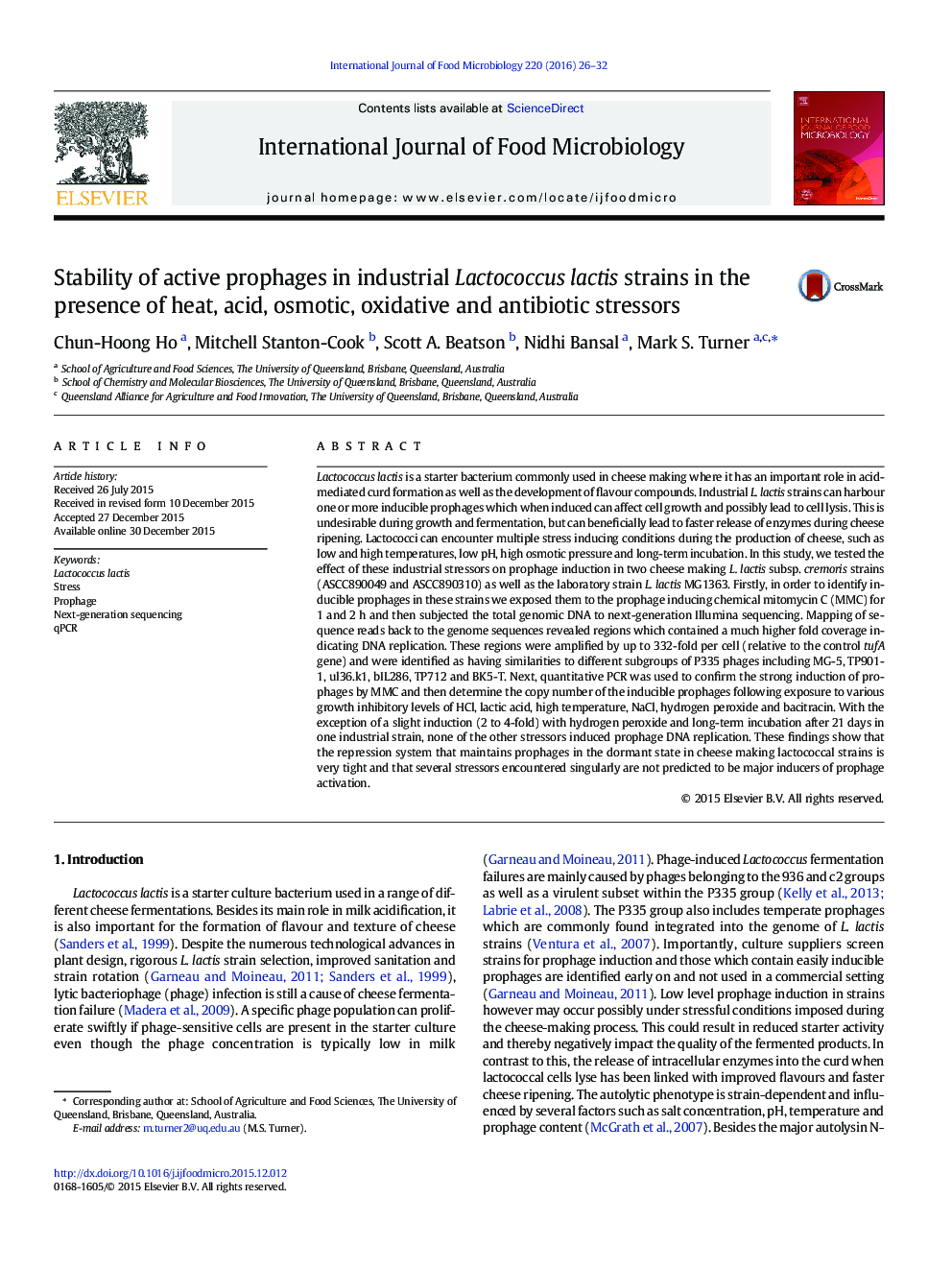| کد مقاله | کد نشریه | سال انتشار | مقاله انگلیسی | نسخه تمام متن |
|---|---|---|---|---|
| 4366324 | 1616563 | 2016 | 7 صفحه PDF | دانلود رایگان |
• Mitomycin C was used to induce prophage DNA replication in 3 Lactococcus strains.
• Inducible prophages were identified using next-generation sequencing of total DNA.
• Increased prophage DNA copies after mitomycin C treatment was confirmed by qPCR.
• Industrially encountered stressors had minimal influence on prophage activation.
• Lactococcal prophages are predicted to be stable under stressful conditions.
Lactococcus lactis is a starter bacterium commonly used in cheese making where it has an important role in acid-mediated curd formation as well as the development of flavour compounds. Industrial L. lactis strains can harbour one or more inducible prophages which when induced can affect cell growth and possibly lead to cell lysis. This is undesirable during growth and fermentation, but can beneficially lead to faster release of enzymes during cheese ripening. Lactococci can encounter multiple stress inducing conditions during the production of cheese, such as low and high temperatures, low pH, high osmotic pressure and long-term incubation. In this study, we tested the effect of these industrial stressors on prophage induction in two cheese making L. lactis subsp. cremoris strains (ASCC890049 and ASCC890310) as well as the laboratory strain L. lactis MG1363. Firstly, in order to identify inducible prophages in these strains we exposed them to the prophage inducing chemical mitomycin C (MMC) for 1 and 2 h and then subjected the total genomic DNA to next-generation Illumina sequencing. Mapping of sequence reads back to the genome sequences revealed regions which contained a much higher fold coverage indicating DNA replication. These regions were amplified by up to 332-fold per cell (relative to the control tufA gene) and were identified as having similarities to different subgroups of P335 phages including MG-5, TP901-1, ul36.k1, bIL286, TP712 and BK5-T. Next, quantitative PCR was used to confirm the strong induction of prophages by MMC and then determine the copy number of the inducible prophages following exposure to various growth inhibitory levels of HCl, lactic acid, high temperature, NaCl, hydrogen peroxide and bacitracin. With the exception of a slight induction (2 to 4-fold) with hydrogen peroxide and long-term incubation after 21 days in one industrial strain, none of the other stressors induced prophage DNA replication. These findings show that the repression system that maintains prophages in the dormant state in cheese making lactococcal strains is very tight and that several stressors encountered singularly are not predicted to be major inducers of prophage activation.
Journal: International Journal of Food Microbiology - Volume 220, 2 March 2016, Pages 26–32
